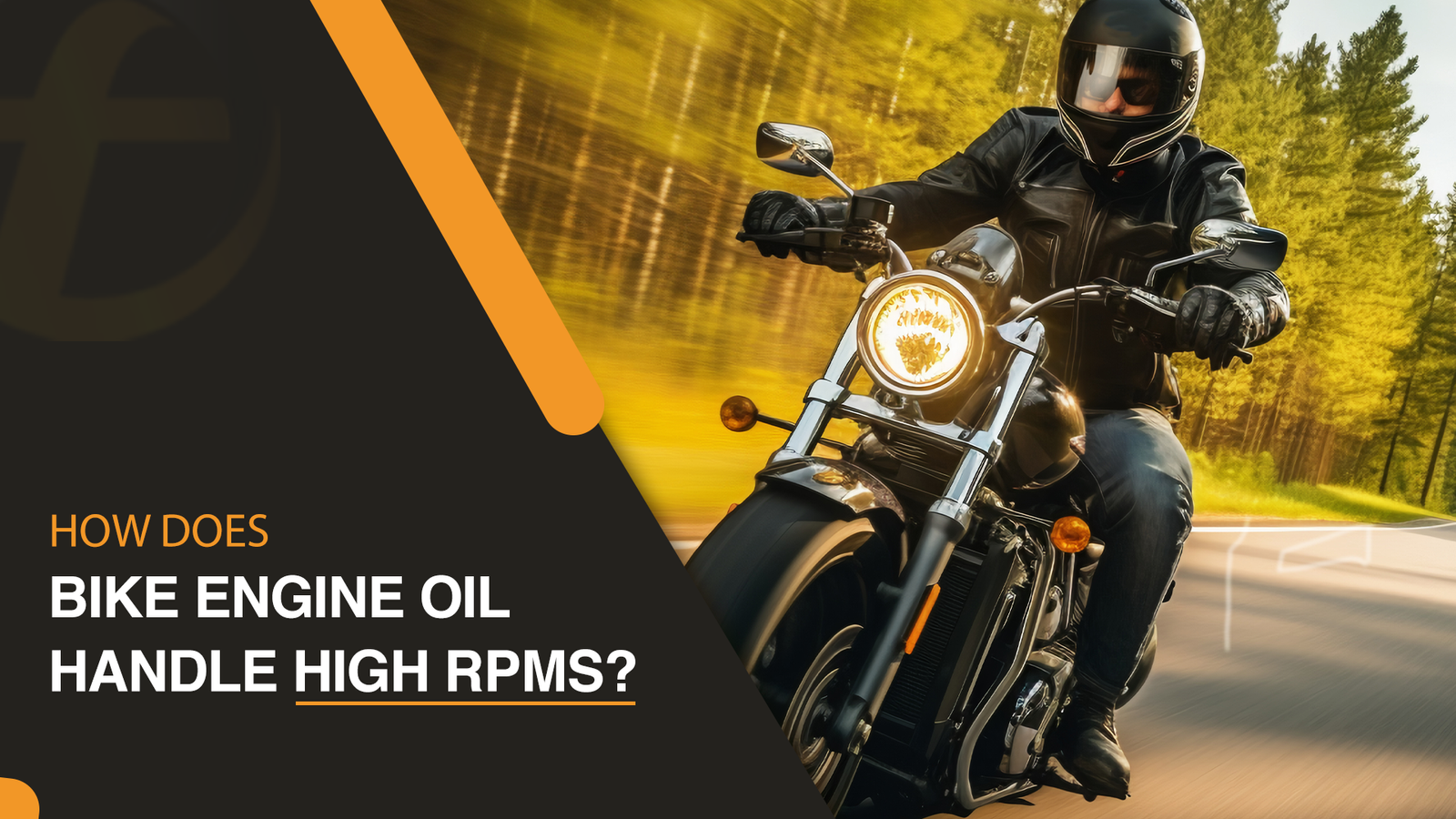
The engine works hard when accelerating your motorcycle, racing on a track, or cruising on a highway. At Fubex Lubricant, we know your bike deserves the best.
Hence, knowing how motorcycle engine oil operates under high RPMs is critical. In this blog, we will delve into the importance of engine oil in such conditions, the issues it confronts, and picking the right oil for your ride.
Importance of Understanding Oil Performance At High Rpms
Think of high RPMs as a race for your engine. The quicker the pace, the more your engine asks more from the oil. If the oil can’t keep up, problems, like worn out parts, or worse, major damage, could happen. This is why picking an oil that can perform even at high RPMs is vital.
What is RPM?
RPM means Revolutions Per Minute. It shows how quickly the engine is spinning. This spinning power helps make the bike go. When the RPM is high, your bike goes quicker but uses more fuel.
When you’re riding, it’s important to switch gears correctly. If you don’t, the RPM might get too high or too low, which can change how well your bike works.
Why High Rpms are Significant in Motorcycles
RPM stands for Revolutions Per Minute. It shows how fast the engine is working. It counts how many times the engine parts spin and move up and down each minute.
More RPM doesn’t always make your car or bike go faster. Every vehicle has a unique range where it works best. There’s a certain RPM that gives the best speed and power.
Cars have a gauge on the dashboard called a tachometer that shows RPM. It’s measured in thousands, and there’s a red line warning when the engine is spinning too fast. If the needle goes into the red zone, the engine is working too hard and might need a rest.
Knowing about RPMs (Revolutions Per Minute) is essential for everyone who wants their bike to run better and save fuel.
Just like in cars, making your bike go faster with higher RPMs uses more fuel. On the other hand, if you keep the RPMs lower, you’ll use less fuel, but the bike might not go as fast.
Understanding how RPMs work helps you ride your bike better, keep the engine in good shape, and know when to change gears.
How RPM Affects Your Bike’s Performance
RPM (Revolutions Per Minute) affects how well your bike runs. If you ride at lower RPMs, you get more power, the engine lasts longer, and you use less fuel. So, checking the RPM is essential if you want a faster bike.
H2: Role of Engine Oil In High Rpm Conditions
Engine oil is key to keep your car running well at fast speeds. This is why it’s so important:
- Maintains Viscosity: Great engine oil keeps the right thickness, even at high speeds, to make sure it keeps doing its job correctly.
- Reduce Friction: Oil with special friction-lowering ingredients reduces friction in engine parts. This stops them from wearing out and getting too hot.
- Cools the Engine: Engine oil takes in and spreads out heat, keeping your engine from overheating and running right.
- Protect Against Corrosion: Top-notch oil guards your engine against rust. Rust can turn into a real headache at fast speeds.
Challenges Faced By Oil At High Rpms
When an engine runs at fast speeds, oil problems can come up. One problem is Oil Breakdown. The oil can get too hot and be under too much pressure.
This can make the oil not work well and can harm the engine. Another problem is that the engine may use up the oil faster at high speeds. This means you’ll need to change the oil more often.
Lastly, bikes that use the same oil for the engine and transmission may face clutch issues at high speeds. This could cause the clutch to slip or even get damaged.
Choosing The Right Oil For High Rpms
Selecting the right oil is crucial for high RPMs:
- Viscosity: Go for oils with suitable viscosity grades, such as 10W-40 or 20W-50. They manages high temperatures and gives excellent lubrication at high RPMs.
- Synthetic vs. Regular Oil: Synthetic oils usually do well in high RPM conditions as they deliver unparalleled performance and defense compared to regular oils.
- Additives: Aim for oils with friction modifiers and reinforcements designed to boost performance and guard the engine.
- Quality Oil: Pick oil that meets guidelines from bodies like the American Petroleum Institute (API) or the Japanese Automotive Standards Organization (JASO).
Maintenance Tips For High Rpm Engines
Want a smoothly running engine even at high speeds? Check out these tips:
- Regular Oil Changes: Make it a habit to switch out your oil. Follow the engine maker’s suggestion for when to do this.
- Check Oil Levels: Look at your oil level often. Add more if it’s low. Not having enough oil can lead to more friction and wear and tear on your engine.
- Inspect Oil Condition: Look at your oil – does it look dirty? Maybe it has a burnt smell? If so, you should replace it.
- Monitor Oil Filter: Make sure your oil filter is clean and swap it out when needed. A filter filled with junk can slow oil flow and lower your engine’s functionality.
Bottom Line
In conclusion, motorcycle engine oil is essential for high RPM situations. It gives slickness, cools down, cleans, and safeguards the engine for optimal run.
At Fubex Lubricant, we have top-notch oils that match your high-powered motorcycle’s demands. Pick the appropriate oil and keep up with maintenance – your bike will perform well and stay in premium shape.
FAQs
Q1: What are the signs that motorcycle engine oil is breaking down due to high RPMs?
Ans: Signs include a drop in oil level, dirty or gritty oil, unusual engine noises, or decreased performance. If you notice these signs, check the oil and consider changing it.
Q2: How does high RPM operation affect the longevity of motorcycle engine oil?
Ans: Running at high RPM tends to stress out and heat parts, speeding up oil’s wear and tear. Regular check-ups and top-notch, fully synthetic oil can support longer oil life.
Q3: Does high RPM use more engine oil?
Ans: When your engine runs at high RPMs (spinning fast), it uses more oil. Faster speeds create more heat, making the oil burn off quicker. So, if you ride at high speeds a lot, you’ll need to check and change your oil more often.


